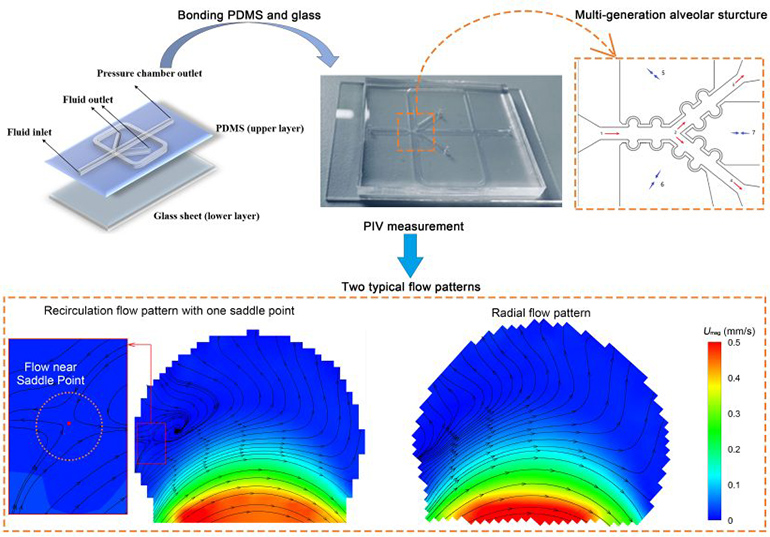Researchers at the Harbin Institute of Technology in China have developed a microfluidic-style chip that models the alveoli present in our airways. The tiny air sacs in our lungs are crucial for gas exchange, but they can be difficult to study and model. A better understanding of airflow patterns in these structures could be very useful in informing the design of inhalable medications, understanding respiratory threats in the form of inhaled particulate pollutants, and also in understanding respiratory diseases. This new device models a branching point of the airways using a flexible polymer that has been molded into small tubes that mimic the alveoli. A glass layer allows the researchers to visualize flow through the device, while a small pump creates rhythmic changes in air pressure to mimic breathing.
Respiratory disease has been in our minds over the past two years. Getting better at fighting it will involve understanding it better. Moreover, if we are to develop new treatments, such as new inhalable medications, it is best if we know what drug properties, such as particle size and shape, are best to achieve maximum uptake and effects in the lungs.
This latest technology could help to cast a little light on these processes by modeling alveoli and their air flow patterns during breathing. It could also be modified to help model airflow in various respiratory diseases, such as COPD. It is essentially a small portion of the bronchial tree that has been modeled on a chip. The chip is multi-layered, and the upper layer contains small tubes that were molded from a flexible polymer. The polymer has been arranged so that it mimics a branching structure within the airways and several alveoli.
The lower portion of the chip is glass, which allows the researchers to view the air flow through the polymer structure. The chip can be attached to a pump and the air within it pressurized in a rhythmic fashion to mimic breathing. The researchers also added some small colored polystyrene spheres, which move as the chip is pressurized, allowing the researchers to study the airflow patterns within the structure.
Successive branches within the airways are called generations, and alveoli appear at the fifteenth generation and persist until the twenty third generation. The new technology has already yielded some new insights into air flow patterns in the lungs and differences between generations.
“The alveolar flow pattern of the 19th generation is dominated by vortex flow,” said Yonggang Zhu, a researcher involved in the study. “Alveolar flow patterns in the 20th generation are similar to those in the 19th, but somewhat compressed. The alveolar flow pattern in the 21st generation has both vortex flow and radial flow. The vortex region is much smaller than the radial flow region. By the time the flow reaches the 22nd generation, vortex flow disappears completely, and we observe only radial flow.”
Study in journal Biomicrofluidics: Microflows in two-generation alveolar cells at an acinar bifurcation
